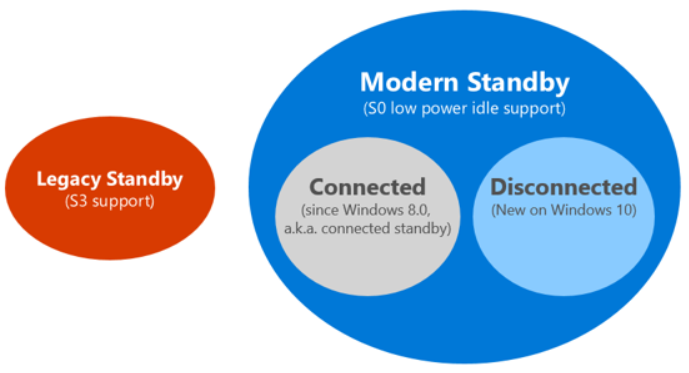[Notebook] Why did I already set up “PC never goes to sleep”, but the system still enters sleep mode after the screen turns off?
1. Please check whether your computer is with Windows 10 and supports Modern Standby mode. Here you can learn more about How to check whether my device supports Modern Standby mode.
2. If your computer supports Modern Standby mode, it means that the symptom is normal. Due to Microsoft’s design, Modern Standby mode had been implemented from Windows 10 announced. The system will enter Modern Standby mode after the screen turns off, and it means that the system enters a quick sleep.
● Modern Standby vs S3 (Sleep)
In Windows 10, there are two power models for PCs: S3 and Modern Standby. The S3 power model is an older standard and is not capable of the instant on that consumers expect from modern devices. Modern Standby is capable of leveraging all the capabilities of a modern chipset and can be integrated across the breadth of tablets and PCs today. The first iteration of Modern Standby was Connected Standby, which first shipped in Windows 8 and Windows 8.1. Modern Standby expands upon the Windows 8.x Connected Standby concept, allowing for flexibility in component selection and the ability for the OS to manage network connectivity in standby.

On any Modern Standby system, the system remains in S0 (Working) while in standby, allowing the following scenarios to work:
1. Background activity
2. Faster resume from a low power state
On systems that can stay connected while in standby, wakes based on specific network patterns may also be set by the operating system to enable apps to receive the latest content such as incoming email, VoIP calls, or news articles.
Technical differences
When in the lowest power state, systems may look very similar to systems in the S3 state—processors are powered off, memory is in self-refresh. The difference is in the path of how it enters and exits low power state. For S3 systems, the system is either active or in S3. For Modern Standby, the transition from the active to the low power state is a series of steps to lower power consumption. Components are powered down when they are not in use. So, the transition into and out of a lower power state is much quicker on a Modern Standby system than on an S3 system. This design also helps with the speed of entry and exit from Standby as it doesn’t require firmware interactions.
For more detailed information, please refer to Microsoft document.
If your problems cannot be solved with above solution, please contact ASUS service center for further information.